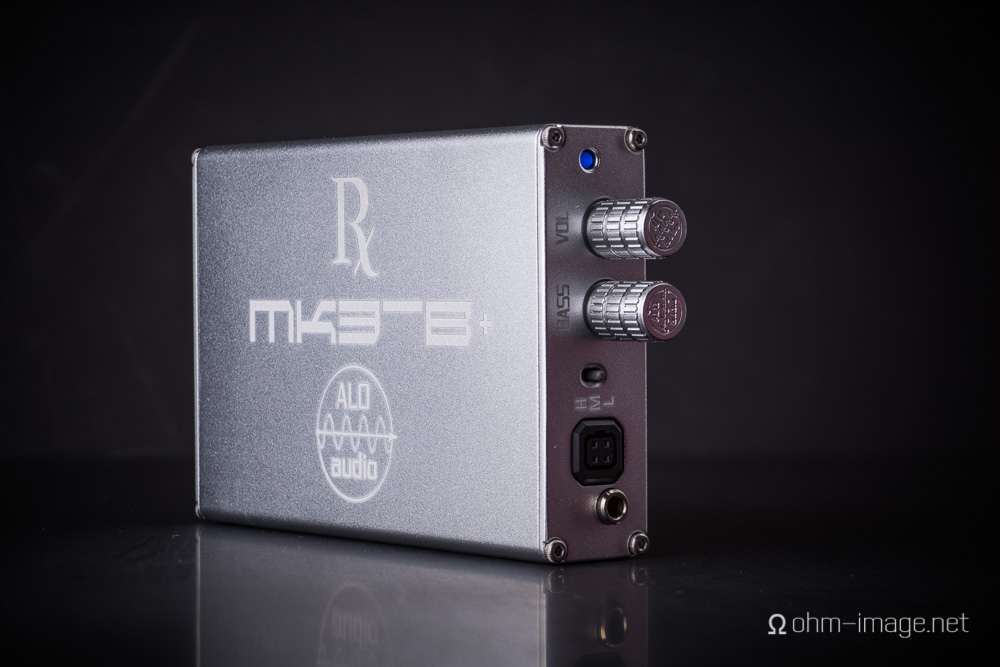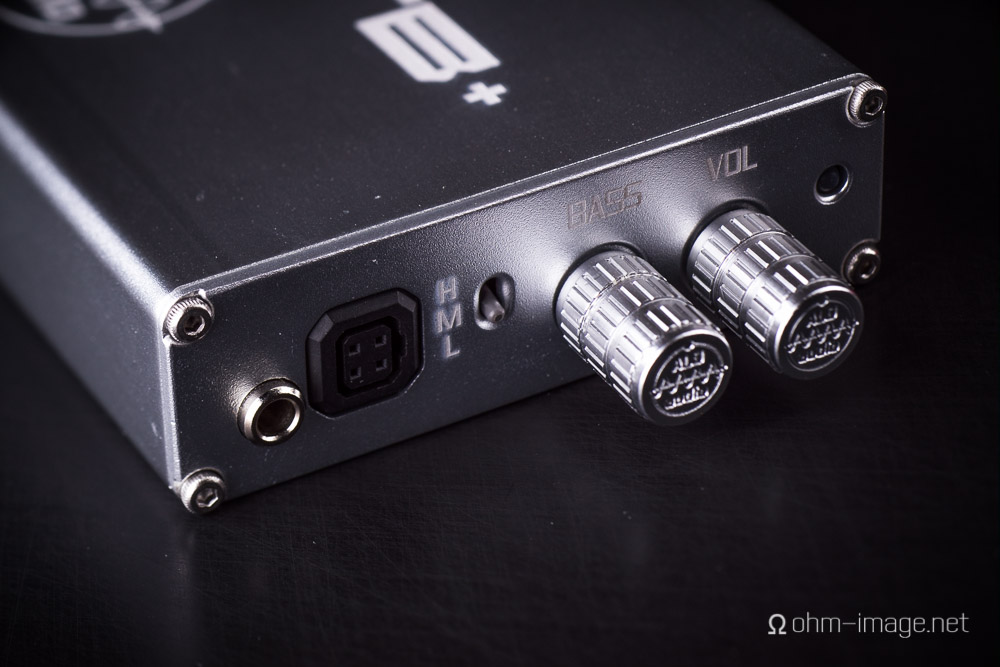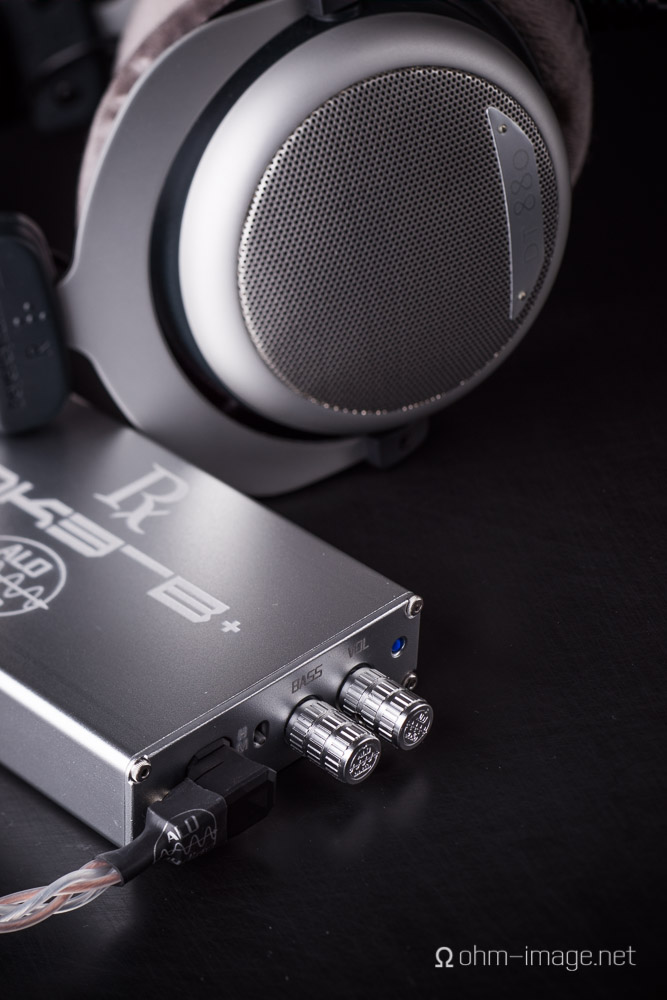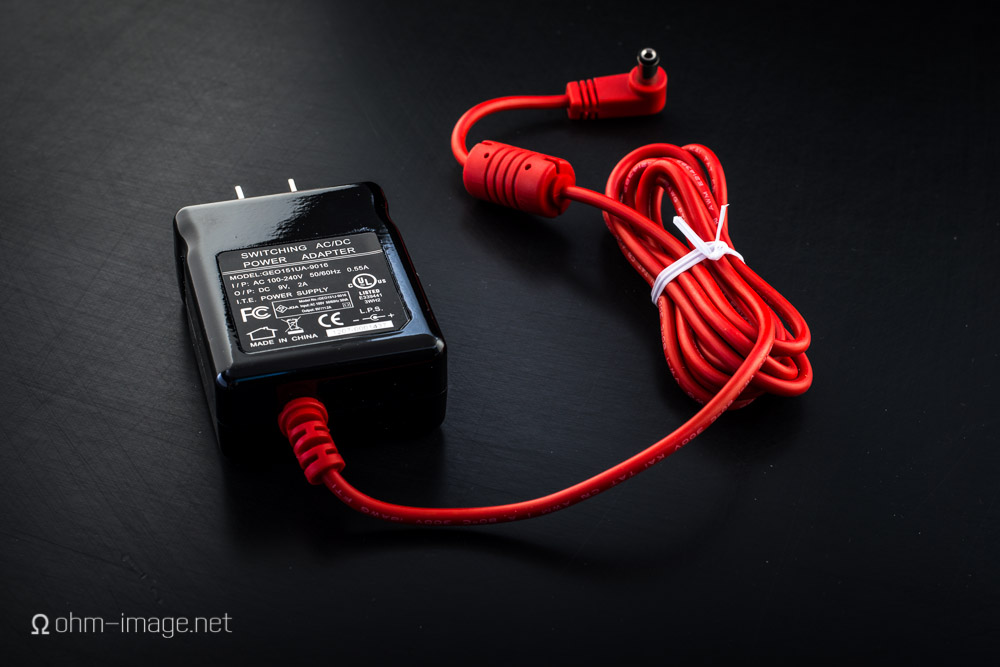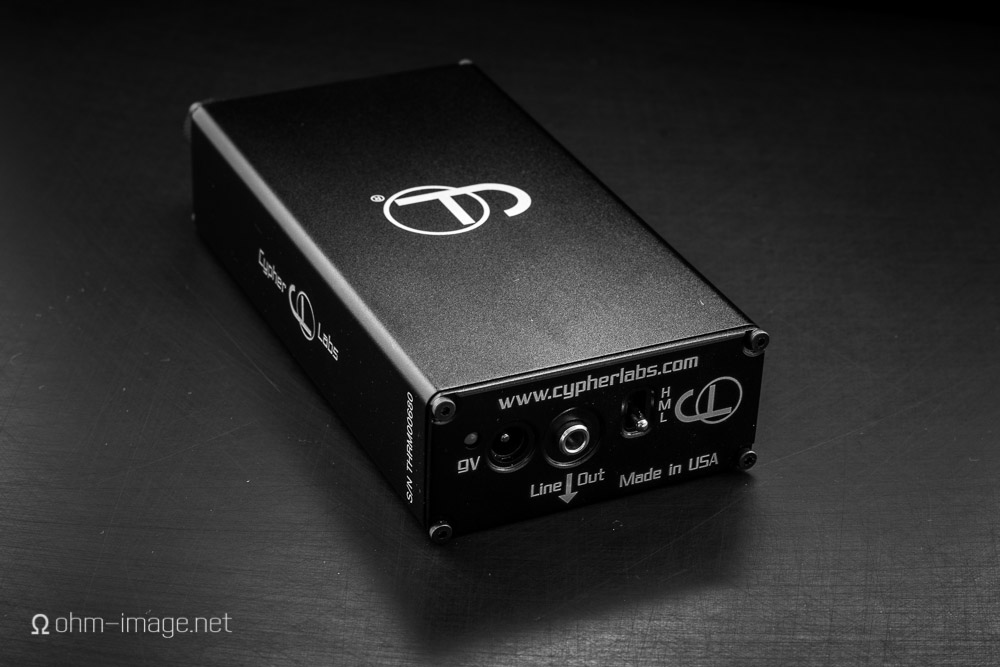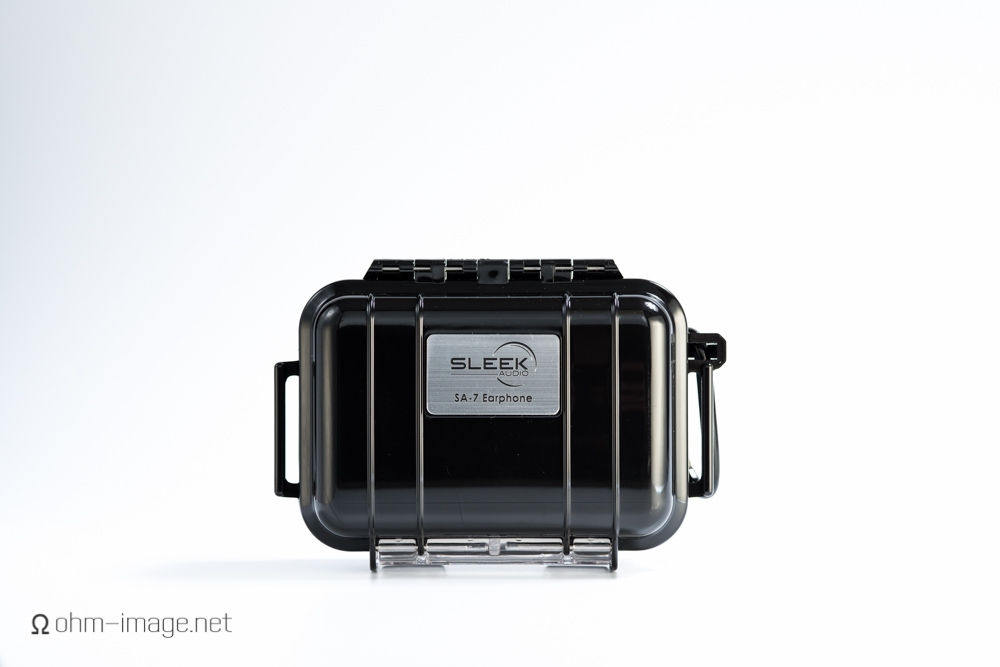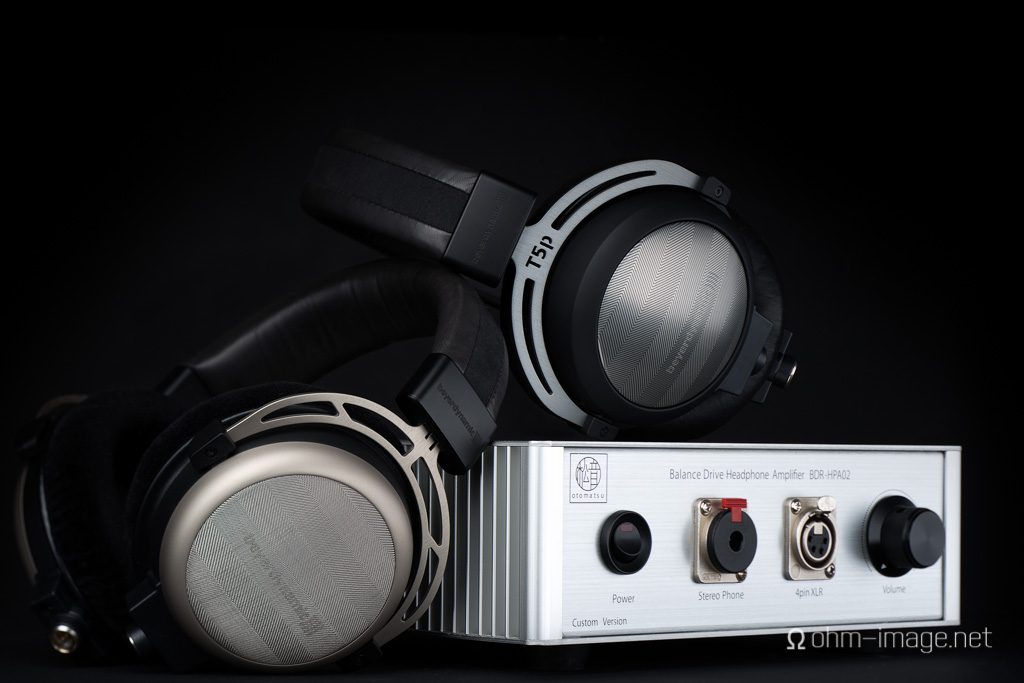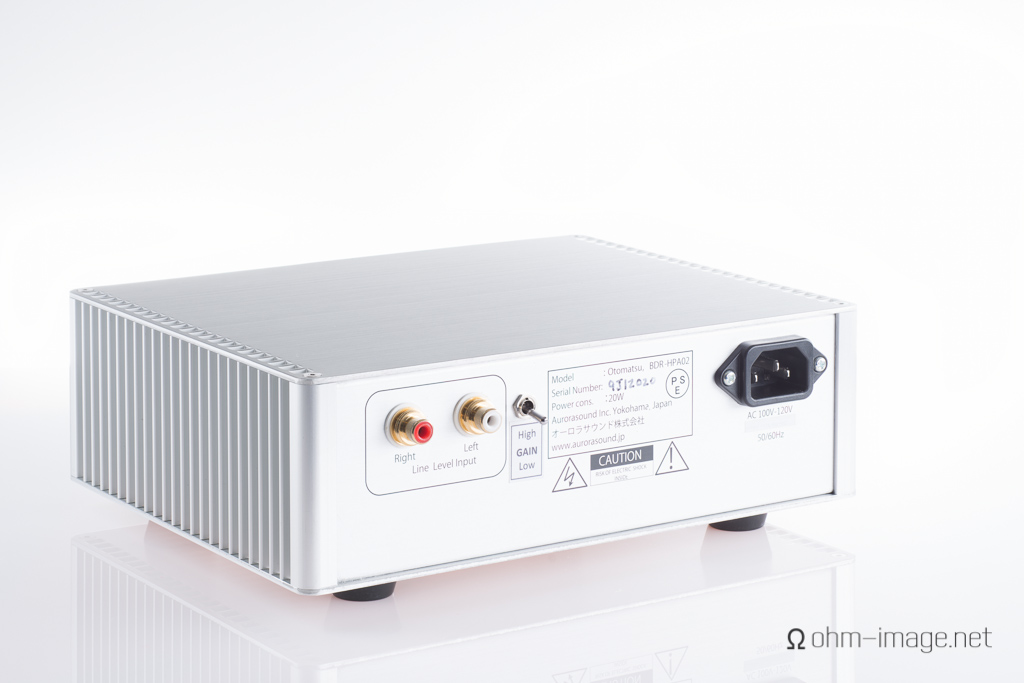No matter how amazing Vorzüge’s previous PURE was, today’s PURE II completely blows it away. The violence is almost illicit. As long as your requirements are explicitly portable, the PURE II may be the best-sounding headphone amplifier at any price. It’s that good.
Read moreinstant ohmage: ALO Rx MKIII-B+
The age of good battery life, massive power, and freaking amazing gain control is upon us. It’s the age of the ALO Rx MKIII-B+, an age that cooks your beans without over-cooking them, you know what I mean?
Read moreinstant ohmage: AudioFly AF78/m
It’s in and out time again, folks, and the AudioFly AF78 is on the plate. This earphone is a garnished by a sturdy melange of resin, nylon, and kevlar. Beneath its tough skin is the main course: a hybrid dynamic / balanced armature driver array. And it is good.
Read moreinstant ohmage: Astrotec AX-60
It’s in and out time, folks, and the Astrotec AX-60 is on the menu. This delightful bit of aluminium and rubber is garnished with three drivers, one dynamic, and two balanced armatures. It comes recommended for the customer who enjoys a mature listen, who invests in the long run. Who isn’t Astrotec’s current customer.
Read moreohmage to the Cypher Labs Theorem 720 DAC
Cypher Labs’ Theorem 720 is the Sony A7/r of portable amp/DACs. It’s for the dude and dudet that want the best sound on the go, but don’t necessarily want to shove a mains-level battery, a separate DAC and a desktop amp into their p/murses. In fact, if you’re in cargos, Theorem 720 will fit in your pockets along with your iDevice/Android portable source of choice. It just so happens to work nicely with your computer, too. Possibly its biggest asset is its big-arse battery that needs charging about twice a week even during that everyday-multiple-times post-purchase honeymoon phase.
Read more
ohmage to the RHA MA350
The moment I tore open the MA350’s packaging, an upside down smile cracked across my clock. I may have even groaned something like, “you’ve got to be kidding!”. This was not the cardboard of 79$ earphone. And, the unassuming aluminium earphone said 40$ more than it ever said 80$. I spent the next ten minutes slapping myself silly, however, because after popping the MA350 into my ears, my impressions changed. Ahh, that’s why they can sell this phone in such a cheap box. Such midrange clarity actually had me convinced the 350 wasn’t a 79$ earphone at all.
Read moreohmage to the Sleek Audio SA7
Back when Cube, was rolling with Lorenzo in a Benzo, Sleek was polishing their chrome-trimmed SA6. Under da hood was a single ultra-wide band driver that laughed in the faces of the tubby competition. But times is changing. Sleek has doubled the SA6’s ultra-wide band armature count and dropped most of the chrome. Sleek’s hard core: the customisable VQ system, the coaxial detachable cable still roll with their shit off safety.
Read moreohmage to the Earsonics SM64
Earsonics have come a long way. Outwardly, their designs don’t show it. But under the bonnet- whoowee! This reviewer has reviewed almost every universal SM series earphone. After carefully fawning over each one, he’s realised two things: first that he is somewhat of an aficionado; and second, that the SM64 is the SM earphone to have.
Read moreohmage to the otomatsu BDR-HPA02 / Jaben balanced Beyerdynamic T1/T5P
Green thinking has kept automobiles out of my garage and garbage disposals out of my sink. It has forced me to master toilet paper origami. So when I say that my anus doesn’t generally pucker up when I hear about a new, hydro-sucking headphone amp, remember that I get by on two squares a day.
The flip side of all of that is simple economics. Headphone amps can cost a pretty penny. But after literally saving thousands of dollars on toilet paper since I was fifteen, and because the only tyres I buy new are for my Marinoni, I’ve begun to look more closely at investing in a mains-sucking amp for those carbon-footprint-be-damned days. Today’s subject, the rather top-flight Beyerdynamic T1/T5 and Otomatsu BDR-HPA02 combo from Jaben Japan, has piqued my interest because:
- It is economical.
- It sounds damn good.
- It comes with a Centrance DACport USB DAC.
- No toilet paper required.
Think I'm shitting you? Read on.
Spec:
Frequency response: 5Hz -80kHz
Distortion: THD+N 0.0046%
Maximum output power: 1500mW x2 @45Ω / high gain
Headphone range: 16Ω - 600Ω High/Low ゲイン
Power: AC100V 50-60Hz
Size: W230mm x D180mm x H80mm
The above spec list was taken shamelessly from Sasaki san’s amazing Music TO GO! blog.
Otomatsu BDR-HPA02 & Beyer T1/T5P: 248.000¥ (2.480,00 $US)
International users: refer to Jaben’s English website for details on how to purchase the combo for your country.
ohmage: haptics
The BDR-HPA02 is a simple machine. The front bristles with the bare minimum of audiophile flare: an aluminium volume pot, a couple of lockable Neutrik outputs, and a plastic power switch. The outputs come in the following flavours: 4-pin XLR, and 6,3mm stereo phono. The low-profile power switch feels great. Sometimes I fiddle that sucker on and off just for the pleasure of it. (My nipples explode with delight!) On the back, an ATX socket sits abaft the mains socket, a gain switch, and a single L/R RCA input sits abaft the volume pot. With the exception of the gain switch, ergonomically speaking, this amp is sound. It isn't, however, pretty.
ohmage: kitsch
There is nothing necessarily pretty about Beyerdynamic nor Aurora Sound. Evidence: heat sink styling, matte finish, camp stove volume pot. If anything, post steam punk minimalism ran amuck. Kitsch totally fled. Even the Beyer upgrade Cryo cable, a weaved tangle of savoir-faire, coils sombrely next to its mates. CMoy amps in gum tins are kitschier than this.
ohmage and porridge: build quality and finish
Locking headphone ports, thick rubber feet, RCA jacks Titanically anchored in an Atlantic of aluminium and steel- these are the marks of a safe. Considering that you can force your way in with a good Allen wrench, the Otomatsu ain’t no vault. But its build quality sets it right in my carping eye.
Beyer headphones are modular tanks. Take them apart, put them back together. A little scratch never looked so good. Destroying them takes a car.
As for amp finish quality...
This Oto - if I may call it that - looks like a garage project. Maybe it is. It is a little rough around the edges. (Indeed, fingering its edges a few times will sharpen your nails.) In comparison to its tasty power switch, the volume pot's mien is pallid. Its undamped, slightly loose action reminds me of a not-yet CLA’d Nikkor 28/2,8 Ai/S lens. It does the job, but it's not the lens you put on when the your camera geek mates come over to fiddle your film.
Onto the T5p and T1 mods:
Jaben’s T1/T5 wiring work is tip top. The mini XLR ports are perfectly capped and anchored into the headphones. The job is done so well, in fact, that I’m buggered as to why they don't licence their work to companies like Beyerdynamic. This can’t be the same Jaben that prints their amps with nonexistent websites, mislabels buttons, and on and on, can it?
Sound
The T1 and T5 have been reviewed ad infinitum. Ergo, this section will focus on the Otomatsu amplifier. Where changes to the stock T1/T5 exist, they will be noted.
Power
Both the T1 and T5 are easy to drive headphones. The BDR-HPA02 spits out enough voltage in low gain to burn the T1s and enough current to fulfil the more stringent requirements of the T5. Its output isn’t quite able to toast low-impedance planar-magnetic headphones but it certainly supplies enough power to get you into your very own Phonaks.
The BDR-HPA02's noise floor is pretty much even with pre-2009 iPods, if not lower. For a desktop amp, that is impressive. You may find that the output of your portable player or amp is even noisier. My Walkmans certainly are. Many portable amps, like ALO Audio's excellent Rx series, also output a noisier background.
For the record, both Woo Audio's WA7 Fireflies and Antelope Audio's Zodiac Silver have lower noise floors.
I can detect the barest hint of background noise via Audio Technica's ES10. That effect is compounded through Sleek Audio's CT7 / SA7. But there isn't a hint of noise with any proper headphone.
At full volume and low gain, the BDR-HPA02 kept clean signals at the following decibel values via:
- Audio Technica ES10: BDR fed from 2V line out: 86-95dB with peaks over 100dB
- Beyerdynamic DT880/600: BDR fed from 2V line out: 79-90db with peaks over 98dB
- Hifiman HE-500: BDR fed from 2V line out: 79-90dB with peaks over 97dB
- Beyerdynamic T1: BDR fed from 2V line out: 87-95 with peaks over 98dB
The BDR-HPA02 kept clean signals at the following volume settings and decibel values via:
- Grado PS500: from 2V line out: 86-93dB with peaks over 96dB @85% volume
- Beyerdynamic T5P: from 2V line out: 82-92dB with peaks of 97dB @80% volume
The above merely illustrates that the BDR-HPA02 has power.
- Beyer 600Ω DT800: set the volume pot to 50% for comfortable listening levels of ~75-80dB.
- Beyer 300Ω T1: set the volume pot to 35% for comfortable listening levels of ~75-80dB.
ohmage +1
Balance
The BDR-HA02 is a neutral-sounding amplifier. The stereo image is wide, especially when driving low current headphones like the T1 and DT880/250/600. It also favours no frequency band. It isn’t too wide. It isn’t too cramped. The most apt (and ridiculous) word I can think of to describe this amp’s soundstage ‘endless’.
But even Kraftwerk must quit sometime.
The DT880 and T1 are one thing; a portable headphone like the ES10, or a low Ω home phone like the ES500, is something completely other. When driving low Ω loads, the HPA02‘s stereo image audibly compresses. Mids step forward a little, high and low stereo detail tapers off. But I’m not about to bag that. The mixing, or relaxing of stringent channel separation can be a good thing if only because it is closer to what your ears naturally hear. It also helps that even under stress, the HPA02 doesn’t botch things.
Both the wide stereo separation, which is present under low current loads, and the more compressed stage care of high current loads, sound great.
ohmage +1
Tracking
How about this question: can an amp that was designed to push enough voltage into a pair of 300Ω cans maintain requisite left/right balance normal listening levels?
Yes. With normal to high-impedance headphones, balance is 100% perfect.
How about IEMs?
Even when fed by 2-3V line level outputs, the BDR-HPA02 is able to sustain perfectly balanced signals at modest volume levels. Because noise levels are rather low, you can even enjoy the odd couple. True, your IEMs will force reproduction errors from the HPA02, but that’s never stopped eager audiophiles before.
ohmage +1
Bass vs. Mids
Both the HPA02‘s single ended and balanced outputs spit flat signals. Grip, control, and wide spatial mapping are pillars upon which the HPA02’s output builds itself. Under the yoke of normal loads, bass never intrudes into the mids. Even when lower impedance headphones are plugged in, bass relinquishes control in only the minutest of steps. Oddly, upper bass and lusty mids get the nod under these circumstances.
Yay?
I’ll say. No matter the headphone, the HPA02 plays smooth. It errs on the side of liquid rather than grain. I think it will have its fans.
ohmage +1
Bass vs. Highs
Again, when driving high-impedance loads, both bass and highs step forward on even footing. Stereo width is enormous. Detail in all frequencies is top notch. Only when low Ω headphones and earphones are plugged in does do audible artefacts creep in. But at no time does this amp sound bad.
ohmage +1
Vs. Low-Impedance
Output artefacting is gone by about 30 Ω, but in order to achieve peak performance, headphones with a minimum of 50 Ω input impedance are required.
porridge +1
Vs. High-Impedance
This amp is home with semi-high to high ohm headphones. It has plenty of voltage at low gain for all but the skankiest of wannabe-speaker headphones. It is limited only by current, and that, only when low Ω headphones are connected. Given the right headphones, hallelujah!
ohmage +1
ohmage: Balanced vs. single-ended
Both outputs appear to cover similar voltages. Both supply adequate channel balance. The killer point of this balanced system is that the tame little T5, and the somewhat powermongering T1 change hats a little. The first time I heard the Jaben balanced T5 I just about ate my headgear. Bass, closer to the DT880/32, wider stage. Control is similar. But that bass. Oh that bass.
The T1 doesn’t get any more liquid, it just opens wider. Even my wife liked/loved it. For a time, she wouldn’t let me take it back. I passed by the T1s specifically because its midrange tends to dominate my favourite band, the mid-highs. Well, this T1 (at least with this amp) is a perfect beast.
ohmage +1
Today I powered through three sheets of Bounty and drank half a bottle of vodka. It’s one of those ‘be-damned days. It’s been a glorious couple of months with the BDR-HPA02 / Beyer system. Jaben have a good thing to sell you. You have a good couple of things to think about.
Namely: if you have a system already, is it worth it to upgrade? I can’t say ‘yes’ here unless you are a collector. What about if you are getting into headphones, or are making the big step up to desktop audio? Absolutely. Newbies: don’t waste time and money on cheap, throwaway upgrades that you will upgrade again and again. Go to the limits of what you can reasonably afford and don’t look back. Don’t hamstring your savings, but invest for the long term. This HPA system is great. The inclusion of a DACport means that you can listen to your favourites from iTunes. Concurrent single-ended and balanced output allows you to compare and contrast the two. A package deal lessens shipping costs and obviates sea-saw decisions.
To top it all off, Jaben has stepped up. The craftsmanship they’ve shown in their cables and connection hardware is impeccable- I ain’t shittin’ ya.
ohmage: 10
porridge: 2
ohmage to the Fiio X3
The train click-click-clicks through my Gravol-induced coma, trumping the Kitchen Aid mixer on my brain. 18.900¥, 40$ CAD over what I’d pay in Vancouver. Shit. There has to be a break somewhere. “When this place pours, it rains for days!” raps Classified from the burning Fiio X3 in my trousers. I suck in the sweaty Tokyo air, cough, and track ahead- Macklemore’s “Thrift Shop” pops up.
I nod, this time not with the Gravol. Maybe we could slum it with the Oster.
Spec:
THD+N < 0.004%@1KHz
SNR > 108 dB (A-Weight )
Frequency Response 10Hz~20KHz(+/-0.2)
Dynamic range > 103dB
Crosstalk > 90 dB @10KΩ @1KHz
Line output Level > 1.7 Vrms
Output Power 1> 540 mW@16Ω
Output Impedance <0.3Ω
Output Power2 > 270 mW@32Ω
Crosstalk >75 dB@1KHz
Output Power3 > 30 mW@300Ω
THD+N < 0.005%@1KHz
Frequency Response 10Hz~20KHz(+/-0.2)
MAX output voltage > 8 Vp-p
SNR > 105 dB (AUX IN)
MAX output current > 250 mA
USB 5V/500mA recommend:USB 5V >1.5A
Battery Capacity 3000 mAH
Battery Life >10 Hours
Storage 8 GB
Fiio X3: ~200$-300$
Disclosure: In the end, I went with the Kitchen Aid mixer. I want something to perform well, to last- and to look good in my kitchen. That’s probably a pretty good look my approach to reviewing audio devices.
The X3 has the looks, and it seems to be made well. For most intents and purposes, Fiio offer Kitchen Aid performance at Oster prices.
There are a number of catches, however...
porridge: haptics
What they have done right: buttons in lieu of a douchey touchscreen, metal instead of plastic, standard ins and outs, is done well. Touch screens require good programming and layout knowledge - both items are Ancient Greek to audiophile companies.
But even hardware nubs require art and planning.
The X3‘s controls are combo buttons. They are splayed across a front panel lined with nothing but combo buttons. The options are: play/pause/off/on, up/down/track forward/backward, and quick menu/bookmark/up-one-level. The full count is six buttons- and not one with a singular purpose. I get the idea that Fiio were more interested in designing a layout rather than adhering to good interface guidelines.
The short of it: simple operations like setting the volume and changing tracks require the player to be navigated to corresponding screens. We haven’t even touched the skewed button layout.
I understand why Fiio did it. It looks cool in product photos/renderings. Yay! But form should follow function. Up/down functions work a lot better in a vertical layout. Ditto left/right functions work better in a horizontal layout. The non-standard diagonal control scheme requires memorisation- and cursing.
If you can slant your thinking to fit the X3, you will find that functionally, it works pretty well. EQ settings are accessed quickly. Ditto bookmark functionality. Ditto drag and drop, digital output, etc. and so on. But after months of using the X3 I’m baffled that Fiio didn’t even at least raise relief patterns on the buttons to help categorise their use. Even Apple, who insist on naked, buttonless designs, have added dedicated volume controls to every mainstream iDevice they make.
As for battery life, the X3 fulfils its spec. Consistently I am able to get 8-10 hours of life with mixed use.
NOTE: if you aren’t used to sound control schemes, the X3 will feel right at home. Your biggest WTF moment will be reading this review- as in, “WTF is he on! This thing rocks!” If you are used to ergonomic designs, using the X3 will require a towel to catch WTF spittle.
ohmage: kitsch
Despite playing back the most important file types, and sporting solid outputs, great sound quality, and so on, the X3 is a no-frills device. Its price pales in comparison to comparable HiFiman, Astell&Kern, iBasso products. It is cheaper even than a hi-end iPod. Part of its economic pricing has to do with the meagre allotment of 8GB onboard memory. To many audiophiles, space is limited only by their growing catalogue of micro SD cards. Users coming from players with more space may squish their brows. SD card integration is well-managed by the X3.
Apart from haptic concerns, the X3 is designed well.
Its shape is simple. Its looks are clean. Had Fiio employed a more traditional plus controller and discrete volume control, the X3 would be even sleeker.
ohmage and porridge: build quality and finish
Fiio's no-nonsense approach to audio circuitry applies to every aspect of their design. The X3 is a relatively solid machine. Its brushed metal back is hard to scratch and its two-plate design is simple and strong.
The back case will flex under pressure, and when twisted, deform more than a comparable iPod will. But the overall design is strong enough to survive the rigours of mobile use. Fiio saved money by inking, not laser etching their control fonts.
Ports are well anchored in the body. Both coax and headphone outs wear o-rings that keep the surrounding chassis from scratching. Strangely, the line out lacks does without one. There is no plastic insulator between the o-ring and the body.
The screen is bright enough for outside use, but its colour is poor. Everything is cast in blue. Again, most audiophiles probably won’t take issue with this. An audio player is for audio, right? Damned be anything else.
Sound
Here, Fiio make up for most of the X3‘s design gaffes. This sub-300$ player sounds damn good. It probably comes from Fiio’s long history of making headphone amplifiers and DACs. The parts they chose and the implementation of them into an audio circuit, are spot on.
Power: ohmage
Fiio’s tenure as an amp maker learned them a thing or two. Headphones run like a dream. No matter how many drivers your earphone packs, no matter how large their diaphragms, the X3 will run them with exquisite attention. Very few headphones will need more power than what is available through the X3 at high gain.
At full volume and high gain, the X3 kept clean signals at the following decibel values:
- Beyerdynamic DT800/600: 92-96dB with peaks up to 100dB
- Hifiman HE-500: 98dB with peaks up to 100dB
- Grado PS-500: 92-96dB with peaks up to 98dB
Only the Grado headphone commonly exhibited distortion at high volumes. In order to sustain clean signal, the X3‘s volume had to be backed off to about 93/100. All three headphones could sustain averaged 90dB signals with peaks of up to 98 decibels while exhibiting zero distortion. At the same volume levels, resolution levels remained nearly identical to unloaded signals.
In other words: if you don’t need hearing aids, the X3 doesn’t need an amp.
The Earsonics SM2 stressed the X3 only minimally. The combo was able to hit 100+dB without error, however compression of the dynamic range began after sustained 105-110dB loads. Of course, no one should listen to those levels, ever. That is, unless you’re Jonesing for a new Phonak hearing aid.
Balance: ohmage
The X3 is perfectly balanced. At first blush it might sound ‘dark’. It isn’t. It renders a flat, full-figured signal. Low/high balance at the frequency and stereo levels is exemplary. Ditto distortion.
This conclusion goes for both 16 and 24 bit files.
Regarding stereo crosstalk: The X3 outperforms most if not all players I’ve heard. By the book. But it may be too wide for headphone/earphone use. It can be overwhelming/disorienting. The X3 would benefit from a good crossfeed option in order to sound more natural.
Tracking: ohmage
The X3’s digital volume pot is perfectly accurate, left to right, at both low and high volume levels. This is great news for sensitive IEM users who will likely keep volumes low. Both max and default volume values can be set from the Player Settings page.
The X3 also allows you to dial in left/right tracking values. This is helpful if one ear is more sensitive than another, or if your headphones/earphones err to one.
Users of extremely sensitive IEMs may notice the X3’s background noise. It isn’t as bad as a Sony Walkman, and certainly not even close to an AMP3, but it outputs 2-3x the amount of noise as a current-gen iPod nano and more than that vs. an iPhone 5. At volume levels of 15 and higher, the X3’s background noise shouldn’t bother even sensitive IEM users. Less than 12, however, is a slightly different story.
NOTE: at Head-Fi I’ve earned the name ‘hiss king’. I am irked by hiss levels that others are not. Even well-respected reviewers. Those afflicted with the same ear are few, but vocal. The above paragraph is written for them.
Bass vs. Mids: ohmage
The X3 plays an even hand. Neither frequency gets more love than the other. Mids, of course, are far easier for the ear to interpret. Detail in both bands is very high and distortion is low. Moot to how the ear hears bass is its slightly lower dynamic range.
Bass enhancement is handled well but is genre-dependent. Fat, duffy bass has a high distortion threshold. Natural bass levels can be tuned quite far. Even setting the X3’s bass adjuster high renders clean lows that never foul up the mids.
Setting bass to a level of 8-10 can cause bass to ‘round off’. But bass will rarely, if ever, distort.
Bass vs. Highs: ohmage
Highs retain edge and force at every volume range. From about 2K, an unloaded X3 exhibits very little audible loss of stereo separation but enough to set it below the iBasso DX100. But only barely...
In general, balance between lows and highs is very good. No matter how big the bass, or how trilly the treble, lows and highs maintain great balance and detail at all safe listening levels.
Vs. Low impedance: ohmage
Very few if any earphones out there should stump the X3’s amp section. It is most comfortable with earphones that average >8Ω under load, but is more than capable even below that.
The X3 packs a lot of output power. If you are primarily an earphone user, using the max volume function is a good idea.
Vs. High impedance: ohmage
While it lacks a 6,3mm headphone jack, the X3 is more than capable of driving most voltage-hungry headphones out there. It won’t be able to hit sustained levels of 110dB with Grado headphones, or Audio Technica’s EARSUIT series, but sustaining those levels aren’t important anyway- again, unless you are on the Jones for hearing loss and its accompanying gear.
I am extremely impressed.
Playback porridge
- responsiveness: The X3 is worlds faster than the DX100 is, but hardly as responsive as the maligned iPod nano.
- gapless: I’ve found this to be hit and miss. If you want your tracks to be fully gapless, rip albums into FLAC and use cue sheets.
- ID3 handling: Again, hit and miss. If you want your albums to play in perfect order, or even show up at all, first create folders, then drag and drop into them. Blind dropping from iTunes or other players will create some anomalies. At worst, albums/artists won’t even show up.
I’m not a slummy. I don’t dish out dosh on things I don’t use for work, but when I do dish, I tend to stay away from fake Tupperware. I abhor compromise. I like copycats even less. But while Oster may have lost to Kitchen Aid at home, I would feel perfectly at home carrying the X3 around instead of a DX100. Sound quality, output power, balance: it has all the stuff an on-the-go audiophile of any pedigree would need. Where it irks: true gapless playback and 100% silent background, are moot to most people.
And that is why I let them pass.
This review was written about two months after first receiving the X3. I was supposed to take only a month. If you hear nothing more out of me, Oyaide have probably...
What bothered me early on was the control layout and its reliance on dual-function buttons. It still bothers me. An audiophile gets used to gapless issues and a bit of fuzz in the background. But consumers who tend to buy they best of what they can afford, tend to be used to good design. Today, the control layout that bothered me early on, bothers me still. What’s that? You couldn’t hear me? Let me just turn the volume dow... wait... wrong menu... sorry. Just give me a moment longer-
-there, I got it!
I was saying that I tend to invest in good, ergonomic design. The X3 offers everything else. Price notwithstanding, Fiio could have designed this player better. Where you put your money, and how that sits with you months down the line, is very personal. Design quirks aside, I believe that Fiio did a good job. But I’m less excited about good than I am about excellent.
If you want a second opinion, check out these fine reads:
Headfonia: First Impressions: Fiio X3 DAP
[Impression] Fiio X3 - High Fi - Low Price
ohmage: 9
porridge: 5





